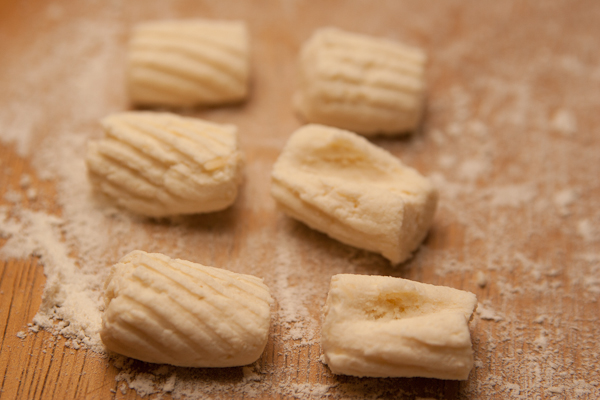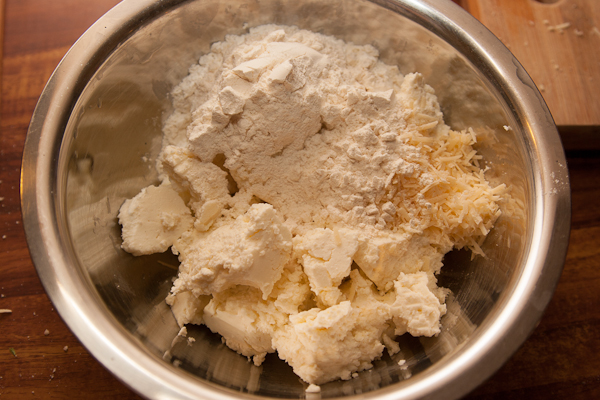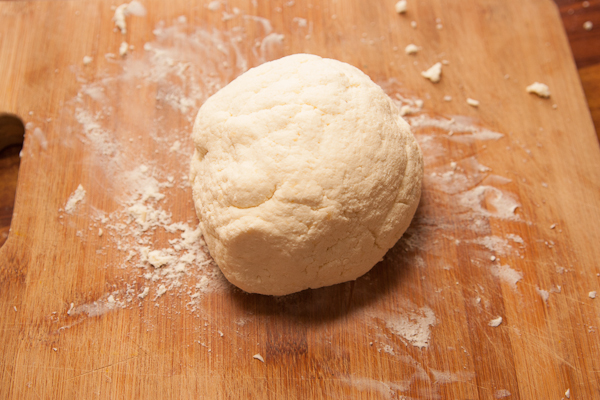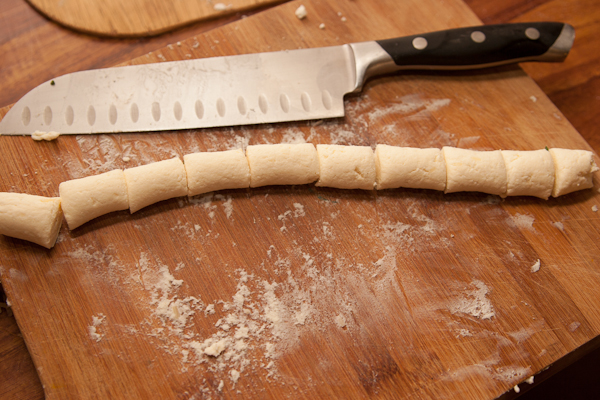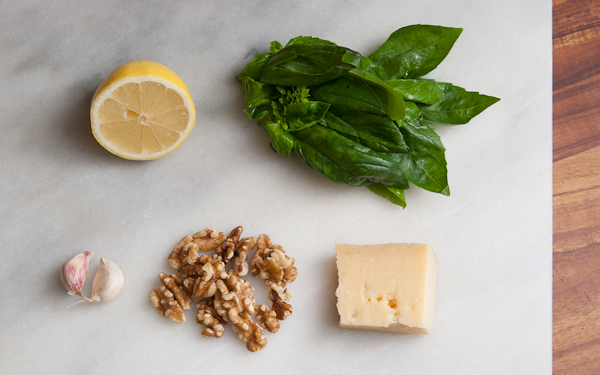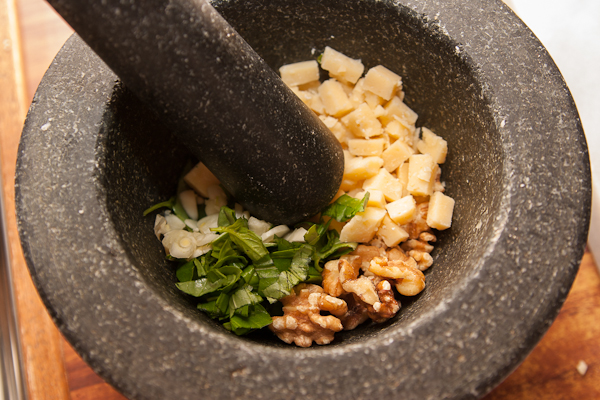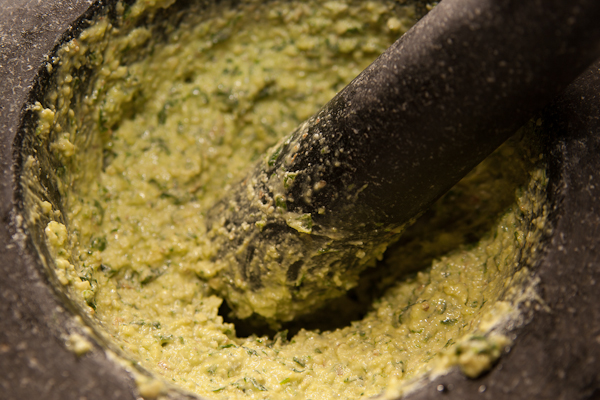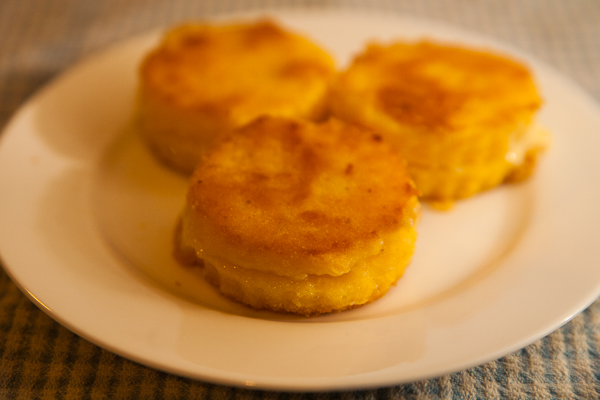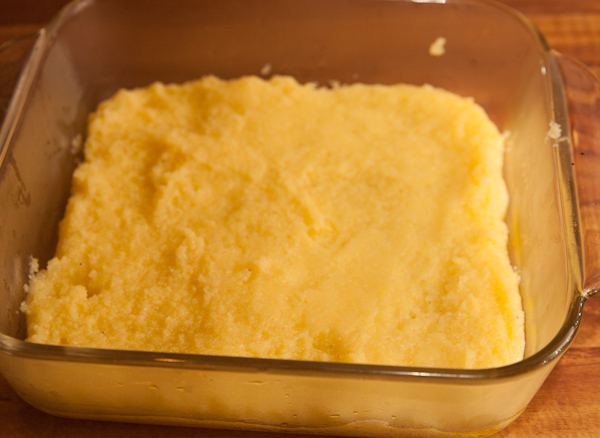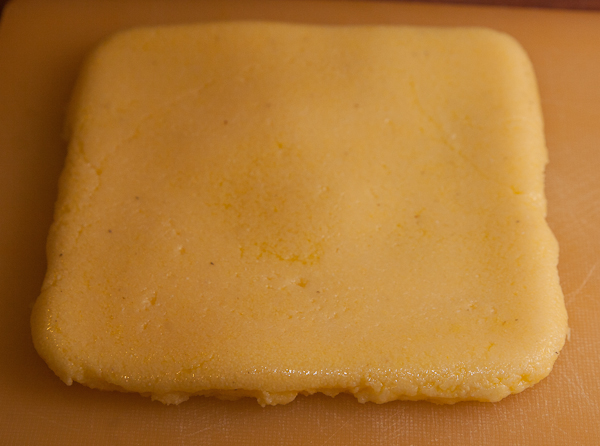Soft fluffy gnocchi are one of my favourite comfort foods so when I heard they can be made with ricotta instead of potato I couldn’t wait to try it. The principle is the same and if anything this recipe is more forgiving than potato gnocchi because the ricotta cheese seems to help bind up the gnocchi when they are cooked. I served my first batch tossed through some fresh basil pesto but next time I’m going to try a simple tomato sauce – I think they needed a bit more zing. I’ve also seen these made as spinach and ricotta gnocchi with the addition of some chopped blanched or frozen spinach to the dough.
Ingredients
- 500g/1lb ricotta cheese. Look for the stuff that comes by the wedge or wheel instead of the gluggy stuff you sometimes get in a tub. The gluggy stuff works but needs more flour added, so the gnocchi will be a little chewier.
- 1 tbsp grated parmesan
- about 1/2 cup plain flour
- a grind of salt and pepper
- optionally, a pinch of garlic powder
Method
Mix cheeses and seasoning together in a bowl.
Add just enough flour so that the dough can be worked easily and be formed into shapes. It should be smooth but not dry. For the drained ricotta I found, 1/2 cup of flour was about right for half a kilo of ricotta.
Roll pieces of dough into a snake about the thickness of your finger. Cut each snake into lengths about twice that width.
The pieces can be cooked now, but it helps sauce stick to the gnocchi if they are given some texture. This is traditionally done by rolling each piece over a ridged board with your thumb. The result is a slightly hollow shell with lines around the outside. I use a ridged gnocchi board like these ones on Amazon. Alternatives are to use the back of a fork, or a cheese grater – all work well.
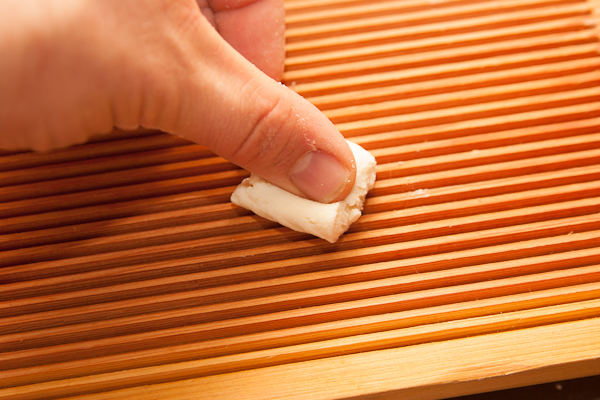
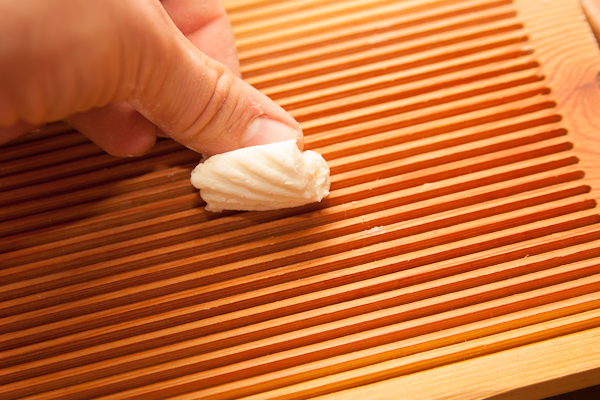


To cook, bring a big pan of water to the boil with a good dash of salt. Cook batches of as many as will fit in the pan in a layer. Cook for a minute or so after they bob to the surface before removing with a strainer. If moving to a dish to serve I find it best to drizzle some oil or butter into the dish first to stop the gnocchi sticking together.
